Understanding the Effects of Gender-Based Violence Across Health Areas
Written by: Danette Wilkins, Program Officer, Breakthrough ACTION
Observed every November 25, the International Day for the Elimination of Violence Against Women gives us an opportunity to take stock of the current state of violence against women and girls (VAWG) around the world. This includes the sobering reality that one in three women and girls experience physical or sexual violence in their lifetime, most often by an intimate partner.1 This number has remained largely unchanged for the last decade. During the ongoing COVID-19 pandemic, all types of VAWG have intensified; this crisis is commonly referred to as the Shadow Pandemic.
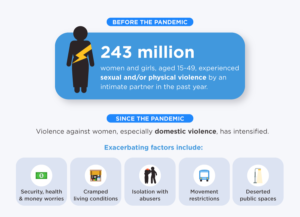
The Shadow Pandemic: The isolation created by COVID-19 has resulted in the intensification of violence against women and girls. Source: UN Women
This day also kicks off the 16 Days of Activism against Gender-Based Violence, an annual international campaign that concludes with Human Rights Day on December 10. Originally started by activists in the early 1990s to call for the prevention and elimination of VAWG, the 16 Days campaign continues to be relevant and necessary today. The prevalence and incidence of VAWG, especially during the COVID-19 pandemic, creates a critical need for global health practitioners and researchers to ramp up efforts to understand and address the ways in which VAWG and other types of gender-based violence (GBV) overlap and intersect with other health areas. Much of the work done to date has focused on HIV/AIDS, with good reason. GBV puts women and girls at greater risk of HIV infection and complications through multiple pathways.2,3,4 At the same time, GBV has serious implications for other health areas as well.
Source: UN Women |
In February 2021, Breakthrough ACTION hosted the expert consultation, Seeking Breakthroughs in Social and Behavior Change at the Intersection of Family Planning and Intimate Partner Violence, to advance understanding of the linkages between family planning (FP) and intimate partner violence (IPV).5 Such linkages include impacts on reproductive autonomy, pregnancy, childbearing decision-making, contraceptive preference, and contraceptive uptake and continuation. As we learn more about the linkages between FP and IPV, we also need to learn more about the pathways that account for these linkages.
To this end, an important recommendation emerged from this consultation to deepen thoughtful and intentional partnerships with survivors of violence who are experts by experience. We have a lot more to learn about the relationship between FP and IPV from survivors and their lived experience. What’s more, survivors possess critical knowledge and experiences regarding the relationship between violence and other health areas, including malaria, maternal and child health, neglected tropical diseases, and nutrition. Both a more comprehensive understanding and more holistic approach are needed to eliminate VAWG and other types of GBV, wherever they may appear.
Source: UN Women |
CONSULTATION RESOURCES
FP and IPV Interactive Online Feature
Technical Brief: English | French | Spanish
ADDITIONAL RESOURCES
Frequently Asked Questions: Types of Violence Against Women and Girls
The Shadow Pandemic: Violence Against Women during COVID-19
Ethical Considerations for Research and Evaluation on Ending Violence Against Women and Girls
REFERENCES
- World Health Organization. (2021). Violence Against Women Prevalence Estimates, 2018: Global, Regional and National Prevalence Estimates for Intimate Partner Violence Against Women and Global and Regional Prevalence Estimates for Non-Partner Sexual Violence Against Women. Geneva: World Health Organization. https://www.who.int/publications/i/item/9789240022256
- Ellsberg, M., & Betron, M. (2010). AIDSTAR-One Spotlight on Gender: Preventing gender-based violence and HIV: Lessons from the field. USAID. https://pdf.usaid.gov/pdf_docs/pnaea603.pdf
- Jewkes, R. K., Dunkle, K., Nduna, M., & Shai, N. (2010). Intimate partner violence, relationship power inequity, and incidence of HIV infection in young women in South Africa: a cohort study. Lancet, 376(9734), 41–48. https://doi.org/10.1016/S0140-6736(10)60548-X
- Leddy, A. M., Weiss, E., Yam, E., & Pulerwitz, J. (2019). Gender-based violence and engagement in biomedical HIV prevention, care and treatment: A scoping review. BMC Public Health, 19, 897. https://doi.org/10.1186/s12889-019-7192-4
- Breakthrough ACTION. (2021). Family Planning and Intimate Partner Violence: An Intersection Deserving of More Attention. https://breakthroughactionandresearch.org/family-planning-and-intimate-partner-violence


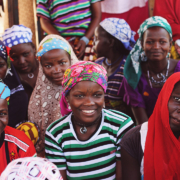 Cambey Mikush/Photoshare
Cambey Mikush/Photoshare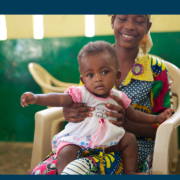 Sara Holbak/VectorWorks/Photoshare
Sara Holbak/VectorWorks/Photoshare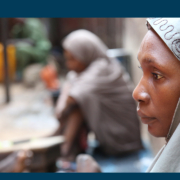
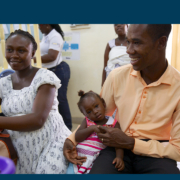 Sarah Hoibak/VectorWorks/Photoshare
Sarah Hoibak/VectorWorks/Photoshare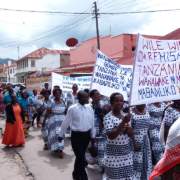 Rebekah Munnikhuysen/US Peace Corps/Photoshare
Rebekah Munnikhuysen/US Peace Corps/Photoshare Getty Images/Image of Empowerment
Getty Images/Image of Empowerment